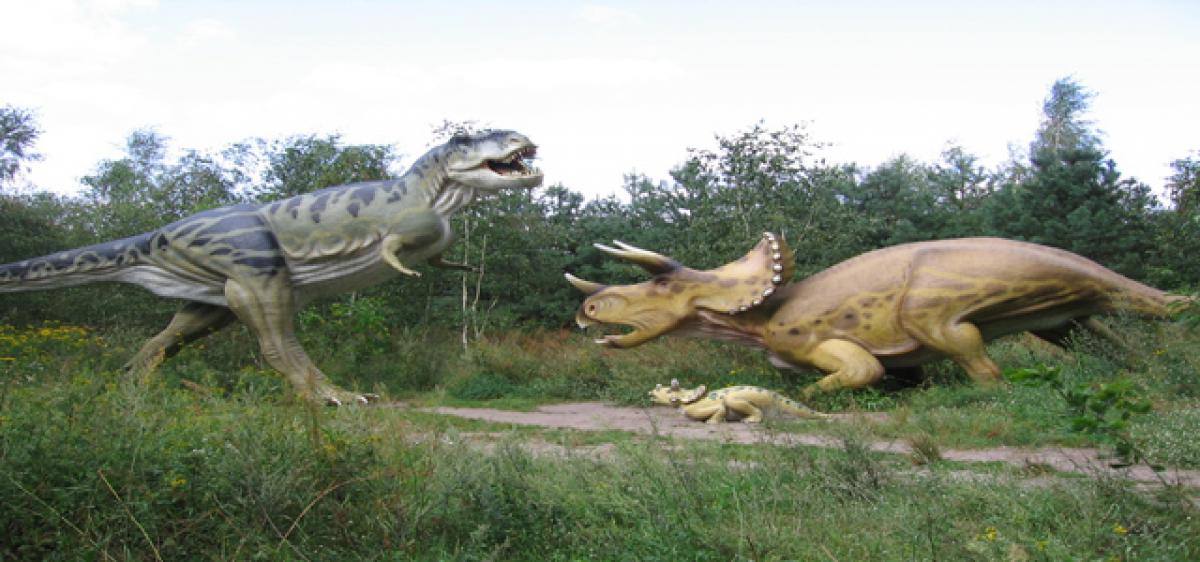Dinosaurs likely did not sing: Study

Dinosaurs may not have been able to make noises similar to the bird calls we hear today, say scientists who have found the oldest known vocal organ of a bird in an Antarctic fossil. The fossil belongs to a relative of ducks and geese that lived more than 66 million years ago during the age of dinosaurs, researchers said.
Houston: Dinosaurs may not have been able to make noises similar to the bird calls we hear today, say scientists who have found the oldest known vocal organ of a bird in an Antarctic fossil. The fossil belongs to a relative of ducks and geese that lived more than 66 million years ago during the age of dinosaurs, researchers said.
The discovery of the Mesazoic-era vocal organ - called a syrinx - and its apparent absence in non-avian dinosaur fossils of the same age indicate that the organ may have originated late in the evolution of birds and that other dinosaurs may not have been able to make noises similar to the bird calls we hear today, researchers said.
Birds are direct descendants of dinosaurs and are considered living dinosaurs by scientists. "This finding helps explain why no such organ has been preserved in a non-bird dinosaur or crocodile relative," said Julia Clarke, from The University of Texas at Austin, who discovered the fossil syrinx and led the analysis.
"This is another important step to figuring out what dinosaurs sounded like as well as giving us insight into the evolution of birds," said Clarke. The syrinx is made of stiff, cartilage rings that support soft tissues that vibrate to produce the complex songs and calls of modern birds.
Cartilage does not fossilise as well as hard tissues such as bone. However, the high mineral content in the syrinx's rings sometimes allows for fossilisation. All other known examples of fossilised syrinxes occur in birds that lived well after non-avian dinosaurs went extinct.
The syrinx was found in a fossil of Vegavis iaai, a bird that lived during the Cretaceous. Clarke described the species in 2005. It was discovered on Antarctica's Vega Island in 1992 by a team from the Argentine Antarctic Institute. However, it was not until 2013 that Clarke noticed that the Vegavis fossil included a syrinx.
During the past two years, the team searched the dinosaur fossil record for other examples of a syrinx, but so far has found none. The asymmetrical shape of the syrinx indicates that the extinct species could have made honking noises via two sound sources in the right and left parts of the organ.
The researchers also scanned syrinxes of other birds to compare with the Vegavis syrinx. This included 12 syrinxes from living birds and the next oldest fossilised syrinx, which had not yet been studied.

















